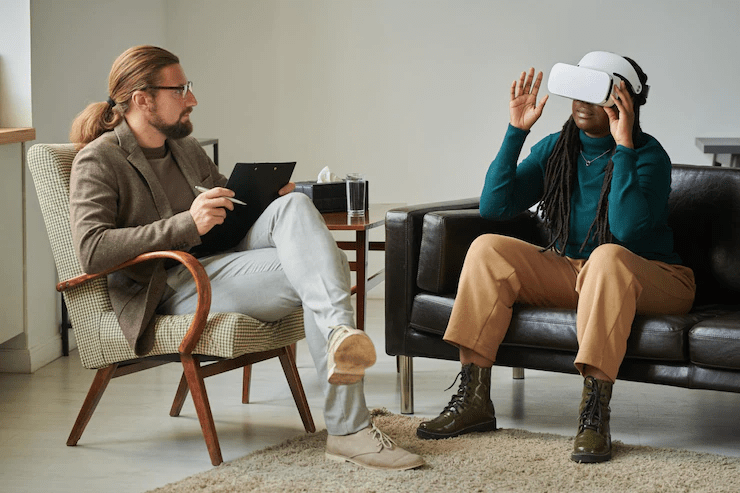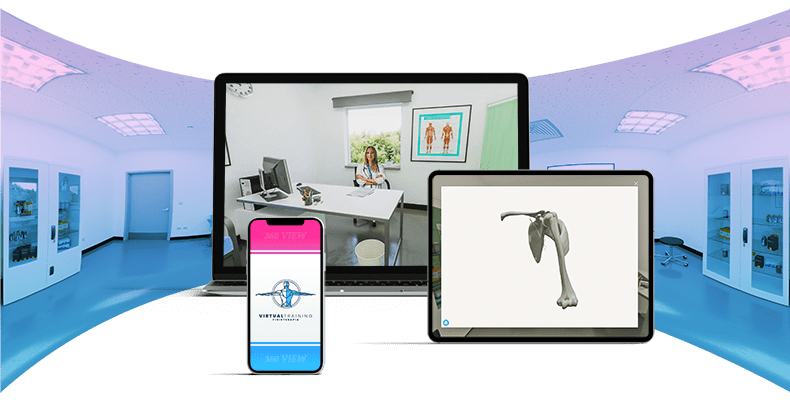It has already been discussed how the use of Virtual and Augmented Reality technologies has found multiple positive results in the treatment of a number of pathologies.
The body and physical appearance are important elements through which to evaluate oneself, but sometimes, the influence of the web where the myth of a slim physique is cultivated can generate a sense of dissatisfaction to the extent that it leads people to adopt unhealthy dietary behaviors.
Eating disorders (EADs) are pathologies characterised by altered eating habits and an excessive preoccupation with weight and body shape that mainly arise during adolescence and mainly affect the female sex.
For the past few years, however, scholars in the field of psychology have attempted to integrate innovative virtual world technologies for the treatment of eating disorders.
Virtual reality (VR), in fact, has proved to be a possible tool to change the negative image one has of one’s body and offer the possibility of being ‘physically immersed in a virtual world’ that can generate feelings, emotions and evaluations equal to those generated by real environments.
VERONA AND ITS THERAPEUTIC PROTOCOL
The first treatment center for psychic disorders in Italy to propose this technique with good results is Villa Santa Chiara in Verona, which has offered a therapeutic protocol using Virtual Reality with very encouraging results in the treatment of various types of psychic disorders.

The protocol includes the support of VR in the traditional psychotherapeutic pathway, with different declinations personally prepared for each patient.
This type of treatment, however, requires the presence of two areas of expertise: the psychological and the technical one involving solid computer and graphic programming experience.
The clinic envisages the use of Avatar as an adjunct to therapy to treat eating disorders. The Journal of Psychological Science State of Mind describes the stages of this process summarised in 3 phases:
- In the first phase the patient draws on the computer an image of how he sees himself and simultaneously the therapist draws a realistic figure of the patient. Then the two drawings are compared and considerations are drawn.
- In the second phase, the patient is made to wear the Virtual Reality helmet to allow him/her to face, through the avatar, the situations that would usually be problematic in patients with this disorder (e.g. shopping, eating in a restaurant, showing oneself without clothes in a swimming pool…).
- In the third phase, the patient is helped to better manage his emotions by “sending the avatar in his place”, so that he can deal with his difficulties in a protected mode.

This tool made it possible to conduct simulations in a protected environment for the patient, who had the opportunity to identify with virtual environments and situations constructed ad hoc for the treatment pathway for that specific patient.
Once the patient wears the helmet, he/she is projected by virtual reality into different contexts in which to experience and confront his/her anxieties and difficulties. The three-dimensional environments are generated by software and allow the patient to interact through the use of different tools: joysticks, position sensors, gloves and suits.
In real time, the accompanying therapist is able to assess the patient’s emotions and behavior, thus improving mutual understanding in order to establish the most effective curative pathway and acquire a range of information that would be difficult to achieve with traditional methods such as a classic clinical interview.
Visit our website to discover how we at AR Market also apply virtual reality technologies to different business fields!




